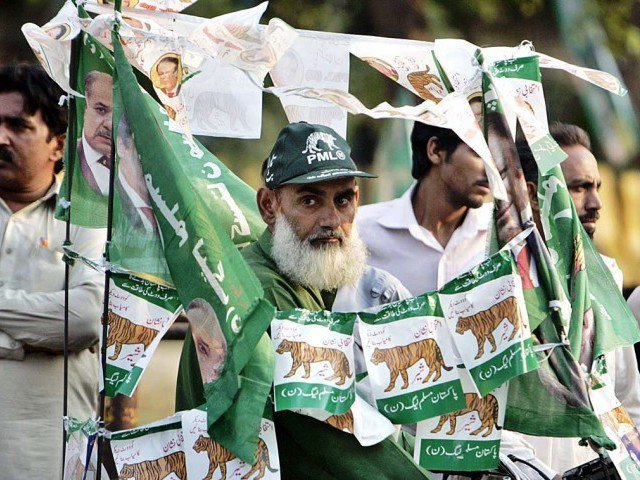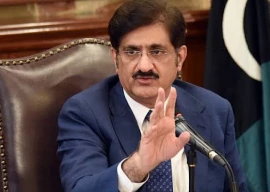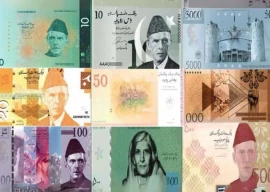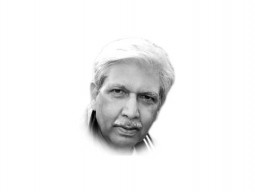
While evaluating the electoral system of a country which is a federation, it is important to look at the dominant province or unit within it. The politics of the dominant unit determines, more often than not, the outcomes of the elections. For the federation in Pakistan, that unit is Punjab.
General elections 2018: Premier assures CEC of women’s participation
One does not have to be good at math to figure out that forming a government in Pakistan is a simple ‘numbers’ game. Exactly 183 of the 342 seats in the National Assembly are from Punjab, making the province the main battleground for all major political parties. But what factors might guide the Punjabi vote?
Political matchmaking in Punjab
Of course, Punjab is a diverse region and divided along multiple social, ethnic and regional layers. For instance, the economy of southern Punjab depends largely on agriculture, while northern Punjab has its economy based on small to medium industries and the retail sector. Since the country’s neglected agriculture sector witnessed a negative growth of 0.19 per cent in the financial year 2015-2016, expect southern Punjab voters to look at the opposition parties that may pretend to be pro-farmers and address the grievances of farmers during election campaigns.
Northern Punjab has experienced sufficient development during the Pakistan Muslim League-Nawaz’s (PML-N) tenure, which has led to growth in industrial and services sectors by 6.4 per cent and 11.13 per cent respectively in the FY 2015-2016. A positive impact of this development, coupled with the fact that it is considered to be a traditional stronghold of PML-N, will make it hard for the opposition parties to challenge its cemented position in the region. But economy and development are not the only predictors of how the electorate might vote. It certainly is a guide to where the resentment in voters lies.
Traditional factors such as caste and the system of kinship will continue to play a dominant role during the next year’s elections. This will be a tug of war for the so-called ‘electables’. Even during the 2013 elections, we saw the PML-N and the Pakistan Tehreek-e-Insaf (PTI) distributing tickets after considering the strength of the candidate’s caste in addition to their influence. Expect the same shenanigans to continue prior to the elections 2018.
‘PPP will take highest number of seats in 2018 elections’
The load-shedding card
If economy and development are not the focus of a majority of the electorates, then the never-ending issue of load-shedding certainly is. Regardless of the promises made to rectify the issue of power shortages within six months or so, the problem still seems to be lingering on in the country.
Most areas continue to face chronic power shortages in the form of load-shedding — eight hours daily in cities and urban centres. Some rural areas are facing 14 to 16 hours of load-shedding. According to a study conducted by Dr Hafiz Pasha in 2012, Punjab – the most populous province in Pakistan – faces 1,683 hours of load-shedding annually.
The situation becomes even more troubling once the economic cost of load-shedding is considered. Pakistan’s economy suffered Rs14 billion (seven per cent of the GDP) in 2015 as load-shedding cost, according to another research conducted by the Consortium for Development Policy Research. Moreover, some 500,000 households are impacted by unemployment as businesses have been forced to shut down because of the ongoing energy crisis in the country.
A shortfall of 4,500 MW keeps fluctuating, depending on the temperature and the production level of the independent power producers. The PML-N government in the centre announced that it would be able to add over 5,000MW electricity in the system by 2018 which would help in reducing load-shedding. If the government is unable to drastically cut down on load-shedding then we can expect the issue to hit the PML-N and the frustration will most likely get translated into a reduction in the party’s vote share.
Power outages to end well before 2018 elections, claims ministry
The effect of Panama
The Panama Papers Leaks case already has taken the issue of high-level corruption in Pakistan to an unprecedented level. Allegations of corruption have been thrown around in the country for as long as there had been political parties, however, this is the first time that the battle is not limited to the rhetoric but has become a legal fight.
A joint investigation team (JIT) members – tasked with investigating the Sharif family’s offshore properties – are still investigating the high-profile case. Albeit under immense pressure from the government, the JIT is unlikely to reach an outcome that will be completely in the PML-N’s favour, considering that the money trail which could not be provided before the Supreme Court is unlikely to magically appear before the the investigation body either.
Apart from the case results, it will be more interesting to note how it will affect the decision of the electorates?
The Panama Papers Leaks case certainly would not be the only deciding factor since the rural politics of Pakistan is based on a system of kinship and patronage rather than be concerned with an outcome of a single case in the top court. However, the case has had some effect, according to a Gallup survey; PTI witnessed a surge in its popularity by three per cent while PML-N saw a decline by two per cent. If the JIT report comes against the PML-N, we can expect a further decline in the latter’s popularity.
PTI kicks off preparation for 2018 elections
Money and politics
While load-shedding, Panama Papers Leaks case and the politics of Punjab are variables only in the local politics, there are certain other constants which will assist us to predict election results with some accuracy.
For instance, money is a very constant predictor of electability in the most modern democracies. During the United States mid-term elections, 94 per cent of the biggest spenders won the house elections. The situation in Pakistan is also not any different. According to political commentators, around Rs30 to 40 million are spent in a single constituency of a member of the National Assembly. Thus, to be a serious candidate in Pakistan’s elections also, the richer you are the better your chances are of getting elected.
Of course, the Election Commission of Pakistan imposes a limit on the amount spent by parties in their elections campaign under Section-49(2) of the Representation of Peoples Act to only Rs1.5 million for NA candidates and Rs1 million for Provincial Assembly candidates. However, these restrictions are meaningless as the candidates find a way to bypass these rules by not using the account for their campaign funding and mostly spending in cash.
Saad Ahmed Dogar is a lawyer based in Lahore.




1736146934-0/Untitled-design-(57)1736146934-0-165x106.webp)








1737614355-0/Express-Tribune-(1)1737614355-0-270x192.webp)









COMMENTS (5)
Comments are moderated and generally will be posted if they are on-topic and not abusive.
For more information, please see our Comments FAQ